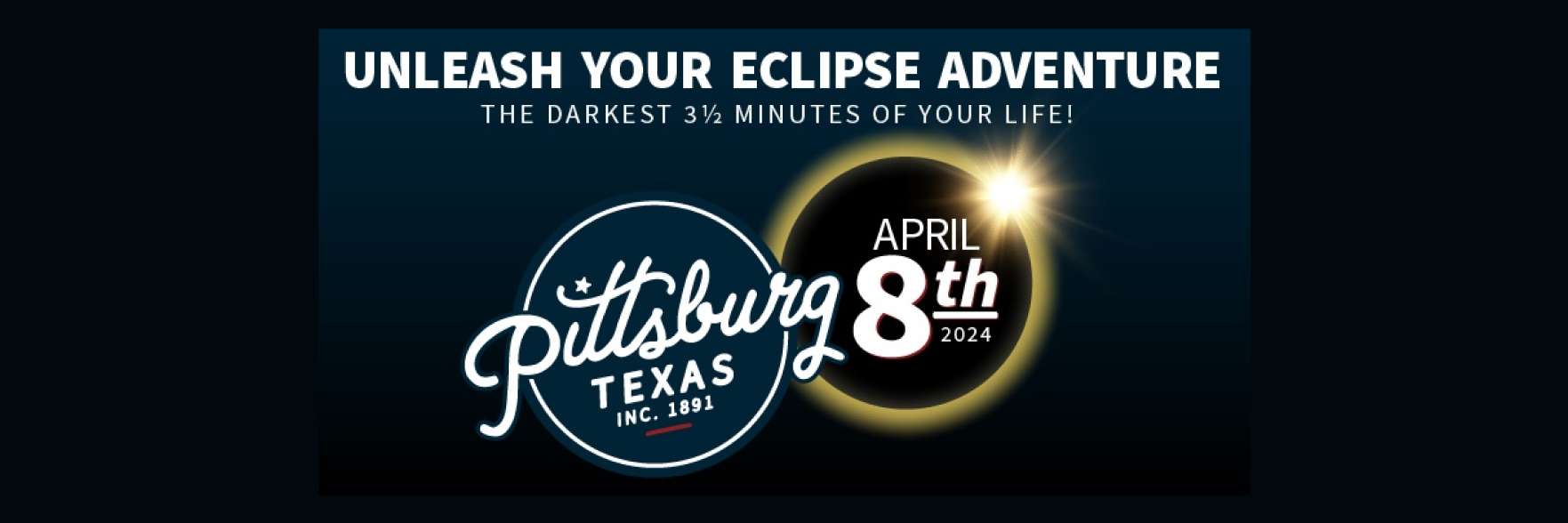Why Pittsburg?Eclipse BasicsLocal Eclipse Events & Viewing SitesEclipse Lodging in PittsburgSpace Alley Eclipse EventsPittsburg's Traveling Giant Solar Eclipse GlassesHigh School Eclipse Art ExhibitPop Up Eclipse Food Truck ParkPreparing for the Eclipse for LocalsEclipse Health and Safety Information from the City of PittsburgHow to Photograph the Eclipse SafelyEclipse Merch and WherePurchase Eclipse Viewing GlassesEclipse ResourcesMedia
Total Solar Eclipse 2024
Loading

How to Photograph the Eclipse Safely
<p><span class="ql-size-large">Attention all photographers eager to capture the breathtaking Total Solar Eclipse on April 8, 2024! Take a moment to peruse these invaluable photography tips, as this extraordinary event demands some special adjustments.</span></p><p><br></p><p class="ql-align-center"><img class="q-image" src="https://api.brightrtravel.com/media/volatile/static-page-block-images/3554a0f2-9dd5-4762-a3bd-aa983a7368ed/thumbnail_3200x1600.jpeg" alt="block_ID_243" style="" width="306" height="459.29890222350264"></p><p><br></p><p><span class="ql-size-large">1. Prior to the sun being completely covered, refrain from looking through the lens. Exercise extreme caution during the end of totality, ensuring you avert your gaze in time to avoid eye damage.</span></p><p><br></p><p><span class="ql-size-large">2. Opt for a 300mm zoom lens, which should suffice for capturing a satisfactory shot.</span></p><p><br></p><p><span class="ql-size-large">3. Camera settings for totality:</span></p><p><br></p><p><span class="ql-size-large"> - For 100mm zoom, utilize the lowest ISO setting. Set the shutter speed to approximately 1/160th. Switch the focus to manual mode, ensuring it is set to near infinity. If you desire stars in your shot, consider under-exposing. To capture definition in the corona, employ a smaller aperture. If needed, use a tripod to slow down the shutter speed or increase the ISO.</span></p><p><br></p><p><span class="ql-size-large"> - For 300mm zoom, set the shutter speed to around 1/400th.</span></p><p><br></p><p><span class="ql-size-large">4. Auto exposure bracketing is highly recommended. Familiarize yourself with this feature in your camera's menu and practice beforehand by photographing the moon at night. If you have a tripod, experiment with various settings, keeping in mind that you only have a two-minute window.</span></p><p><br></p><p><span class="ql-size-large">5. If you intend to capture the eclipse using a phone:</span></p><p><br></p><p><span class="ql-size-large"> - Take pictures of the people around you, capturing their expressions. Then, position yourself behind them to capture a shot of them observing the eclipse against the sky. Since your phone may struggle with the low light conditions, it's crucial to know how to adjust exposure settings. Above all, remember to disable the flash. Practice in advance by photographing the moon at night.</span></p><p><br></p><p><span class="ql-size-large">6. Embrace the moment:</span></p><p><br></p><p><span class="ql-size-large"> - Don't become overly consumed with capturing pictures. Allow yourself the opportunity to fully experience the awe-inspiring surroundings and witness the world immersed in the shadow of this extraordinary spectacle.</span></p><p><br></p><p><br></p><p><span class="ql-size-large">For Tips on how to use your Smartphone for photography go to: </span><a href="https://eclipse2017.nasa.gov/smartphone-photography-eclipse" rel="noopener noreferrer" target="_blank" class="ql-size-large">Smartphone Eclipse Photography</a></p>